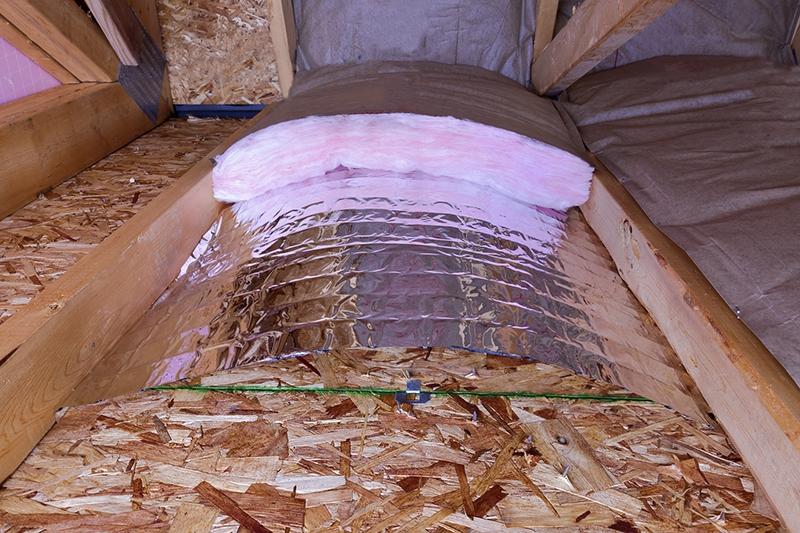
The SuperPerf foil helps minimize the convective looping within the insulation. Installing foil on top of the insulation acts like the windproof shell on a jacket. The reason this method is so impressive is because radiant barrier makes regular insulation more effective.
#Attic radiant barrier insulation install#
It is typical for two people to easily install radiant barrier into an average size home in just a few hours.įor any climate that is installing radiant barrier on the attic floor over insulation, we recommend our S uperPerf™ product which is designed for maximum breathability and performance. This install process is usually pretty simple and quick in most attics. This method can be used in any climate, though it historically has been most popular in colder climates.

This is probably the easiest method to install Radiant Barrier AtticFoil™ is to lay the foil out OVER the existing insulation on the attic floor. Laying Foil On Top of Insulation on the Attic Floor

When installing a foil-type barrier, it's important to allow the material to "droop" between the attachment points to make at least a 1.0 inch (2.5 cm) air space between it and the bottom of the roof. This is generally done just before the roof sheathing goes on, but can be done afterwards from inside the attic by stapling the material to the bottom of the rafters. In a new house, an installer typically drapes a rolled-foil radiant barrier foil-face down between the roof rafters to minimize dust accumulation on the reflective faces (double-faced radiant barriers are available). It's easier to incorporate radiant barriers into a new home, but you can also install them in an existing home, especially if it has an open attic. The reflective insulation trade association also offers installation tips. If you choose to do the installation yourself, carefully study and follow the manufacturer’s instructions and safety precautions and check your local building and fire codes. In cool climates, however, it's usually more cost-effective to install more thermal insulation than to add a radiant barrier.Ī radiant barrier's effectiveness depends on proper installation, so it's best to use a certified installer. The reduced heat gain may even allow for a smaller air conditioning system. Some studies show that radiant barriers can reduce cooling costs 5% to 10% when used in a warm, sunny climate. Radiant barriers are more effective in hot climates than in cool climates, especially when cooling air ducts are located in the attic. Also, the greater the temperature difference between the sides of the radiant barrier material, the greater the benefits a radiant barrier can offer. A radiant barrier reduces the radiant heat transfer from the underside of the roof to the other surfaces in the attic.Ī radiant barrier works best when it is perpendicular to the radiant energy striking it. The hot roof material then radiates its gained heat energy onto the cooler attic surfaces, including the air ducts and the attic floor. Much of this heat travels by conduction through the roofing materials to the attic side of the roof.

When the sun heats a roof, it's primarily the sun's radiant energy that makes the roof hot. The radiant barrier should be installed in a manner to minimize dust accumulation on the reflective surface. Dust accumulation on the reflective surface will reduce its reflective capability. To be effective, the reflective surface must face an air space. Radiant barriers and reflective insulation systems work by reducing radiant heat gain.

Most common insulation materials work by slowing conductive heat flow and - to a lesser extent - convective heat flow. Radiant heat travels in a straight line away from any surface and heats anything solid that absorbs its energy. As the liquid or gas cools, it becomes denser and falls. Heat transfer by convection occurs when a liquid or gas - air, for example - is heated, becomes less dense, and rises. Heat flows by conduction from a hotter location within a material or assembly to a colder location, like the way a spoon placed in a hot cup of coffee conducts heat through its handle to your hand. Heat travels from a warm area to a cool area by a combination of conduction, convection, and radiation.


 0 kommentar(er)
0 kommentar(er)
